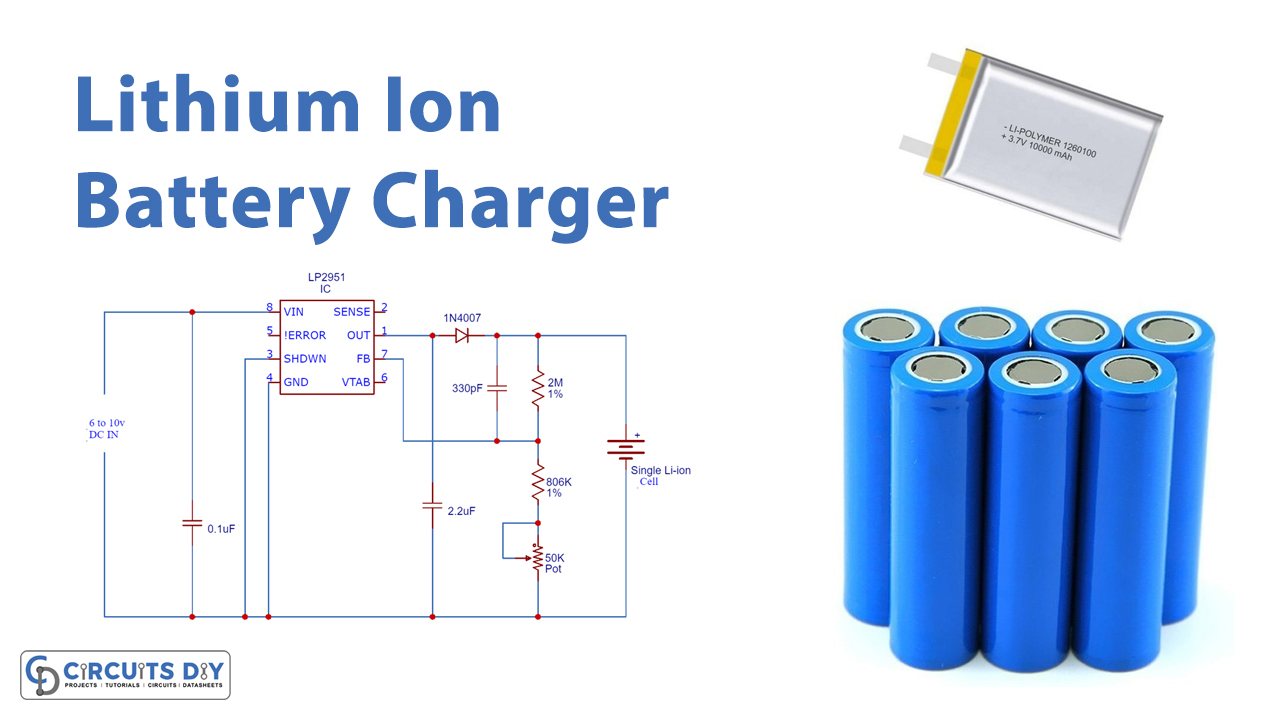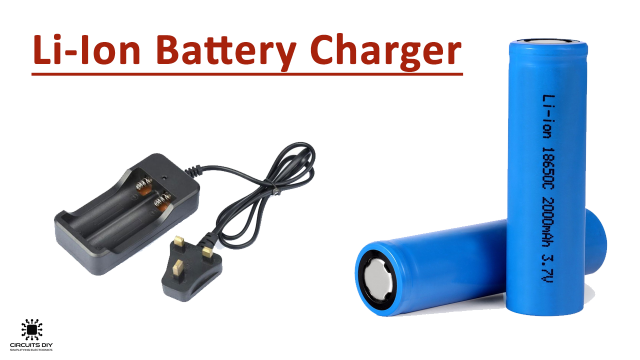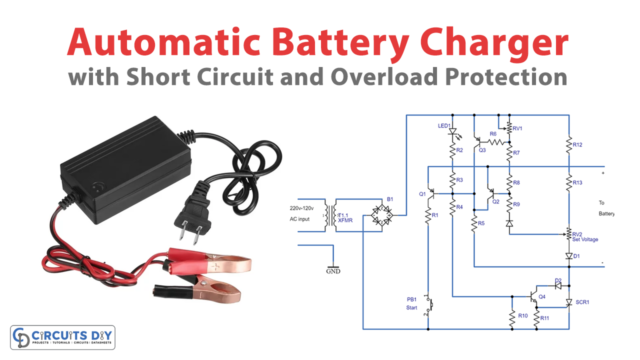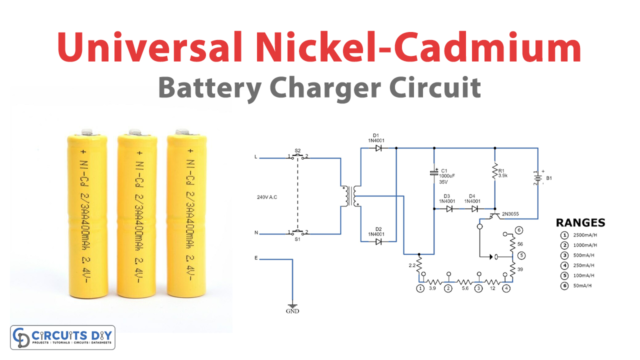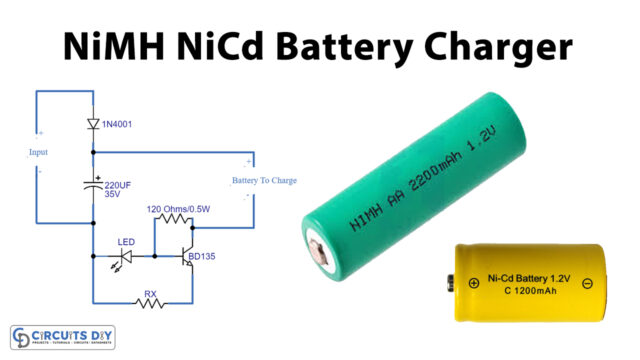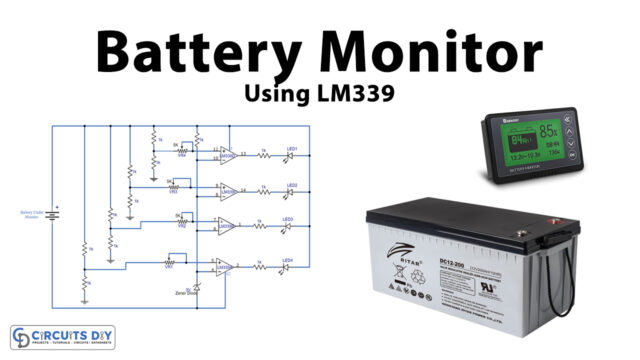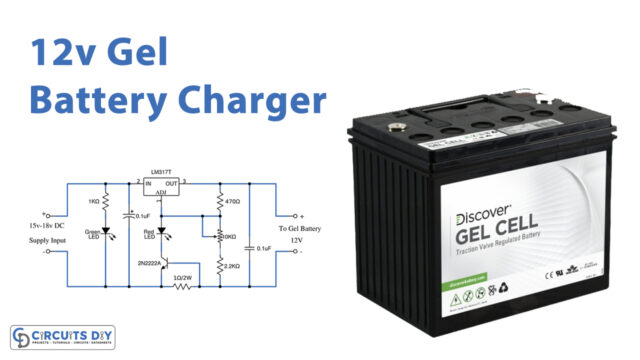Lithium-based batteries are a flexible method for storing a high amount of energy. They have one of the most elevated energy density and specific energy(360 – 900 kJ/kg) as compared to other rechargeable batteries
In this tutorial, we are demonstrating a Li-ion Battery Charger Circuit. Li-Ion batteries usually require constant current, constant voltage (CCCV) sort of charging calculation. A Li-Ion battery ought to be charged at a set current level (regulating from 1 to 1.5 amperes) until it arrives at its peak voltage. Now, the charger should switch over to constant voltage mode, and give the current to hold the battery at the voltage (normally 4. 2 V per cell). Thus, the charger must be fit for giving stable control loops to keep up either current or voltage at a steady value, depending on the condition of the battery.
Hardware Components
The following components are required to make Li-Ion Battery Charger Circuit
| Sno | Component | Value | Qty |
|---|---|---|---|
| 1. | Single Li-ion Cell | Discharged | 1 |
| 2. | Voltage Regulator IC | LP2951 | 1 |
| 3. | Resistor | 806K, 2M | 1 |
| 4. | Battery | 6V – 10V | 1 |
| 5. | Potentiometer | 50K | 1 |
| 6. | Diode | 1N4007 | 1 |
| 7. | Capacitor | 0.1µF, 2.2µF, 330pF | 1 |
LP2951 Pinout
For a detailed description of pinout, dimension features, and specifications download the datasheet of LP2951
Li-Ion Battery Charger Circuit
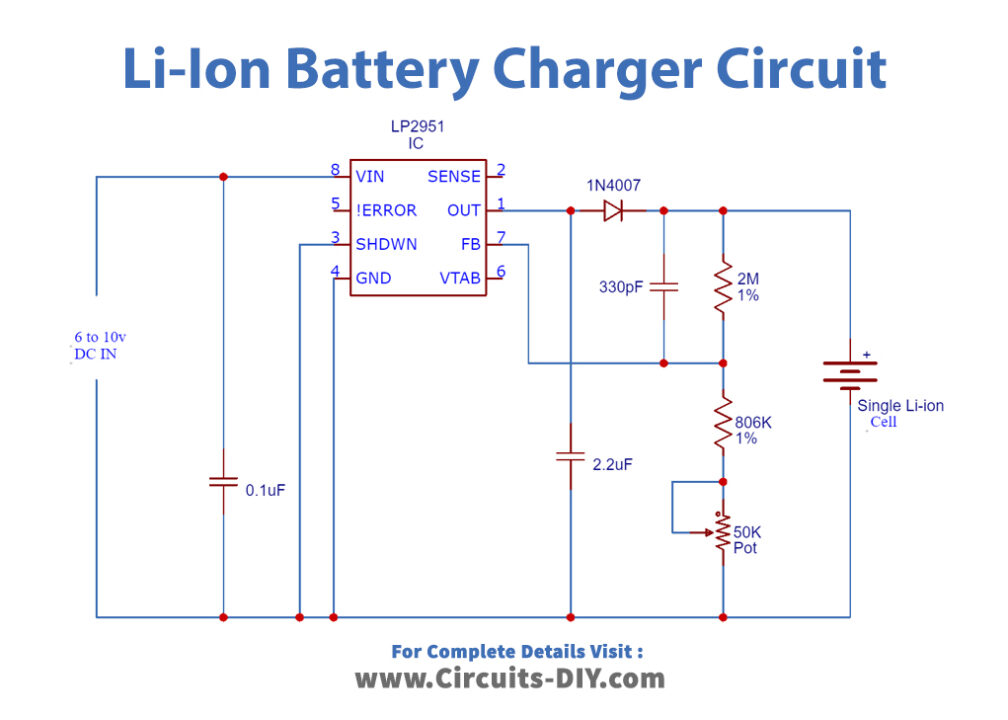
Working Explanation
The circuit operates in a quite simple way. This lithium-ion battery charger circuit utilizes an LP2931 controller IC. The diode is working as a blocker / current blocker to prevent the current flow back into the IC when there is no voltage on the IC input. The yield voltage can be adjusted with a 50k potentiometer between 4.08V to 4.26V. The circuit gives 100mA of charging current. The charging current is 100mA because of which it will require some investment to charge the li-ion battery so the circuit is useful for utilizing as an overnight charger.
Applications and Uses
- The main application of this circuit is used to charge the Li-ion Batteries.
- The drawback is, like capacitors or different sorts of batteries, they can not be charged by an ordinary power supply. They should be energized to a particular voltage with a restricted current. Else, they transform into potential ignitable bombs. Storage of such a huge amount of energy in a little and ordinarily tight packaging device can be extremely risky.


